The 1950s was a spirited time for a great many things. The planet had lately sloughed off the weight of a World War, and it was only natural that everything felt rejuvenated, with new-found optimism to brave the possible futures tracking into myriad new directions, and a reawakened appetite for life beyond the brutish business of merely staying alive. For lovers of the sea, the technical pieces of the puzzle for granting relatively unfettered access to the underwater world were finally coming together with the invention of the aqualung in 1943 and the wetsuit in 1952. And not a moment too soon, as a new generation of amateur and professional divers would answer the call of Jacques-Yves Cousteau’s full-color 1956 documentary The Silent World to explore the briny depths.
Running in step with the growing adoption of open water diving for both commercial and recreational purposes, several dive watches were debuted in this period which have gone on to become the iconic dive watches of today, as pioneers which have beaten down a path for subsequent models to follow, not least by way of aesthetics and technical evolution. This exalted class of pioneers includes Longines’s first dive watch, the ref. 6921-1 Nautilus Skin Diver of 1959.
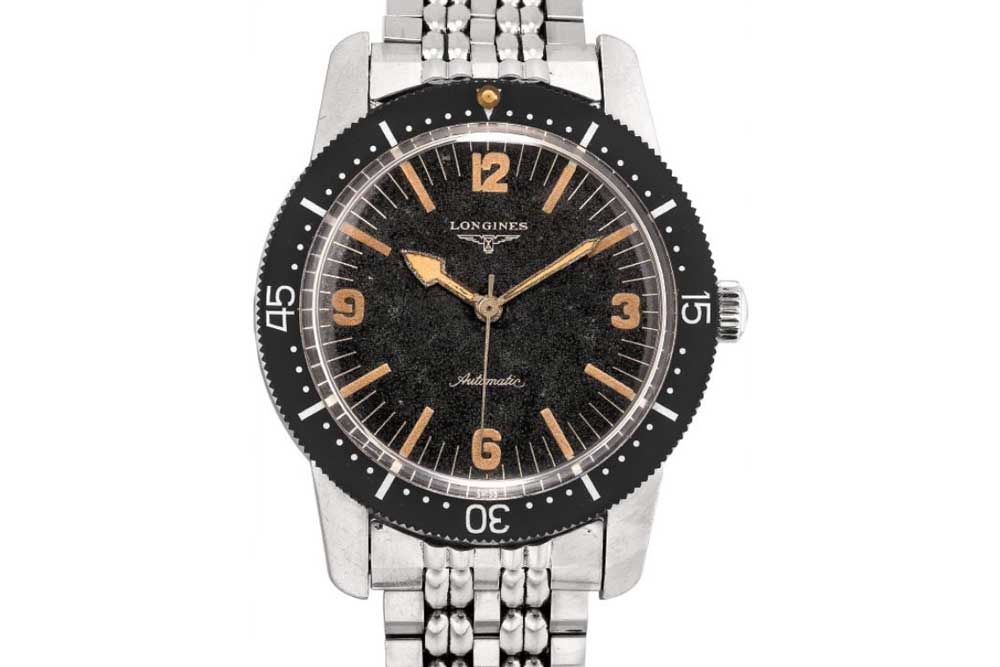
Longines ref. 6921-1 Nautilus Skin Diver of 1959 (Image: Phillips Watches)
The Skin Diver was large for its time, in a 40mm stainless steel case with external rotating timing bezel in bakelite, and a single crown. The latter sported a cross-hatch pattern to indicate the use of case sealing technology by Ervin Piquerez S.A. (EPSA), made famous by the dual-crown Super Compressor dive watches of the late 1950s, where the watch case becomes more water-tight from the increased water pressure as the wearer dives deeper. As a result of EPSA’s case sealing technology, the Skin Diver was rated to 150 meters of water resistance — impressive for its time.
Much has happened in the 60 years since the Nautilus Skin Diver was introduced; but from the looks of the re-issue of this timeless classic, thankfully little has changed. Most notably, the new Longines Skin Diver Watch has a slightly larger case, at 42mm. It wears on the large side too, courtesy of its long lugs. Longines has retained the hands, long markers and the loopy typeface for the quarter hours of the original, while rightly resisting the temptation to plant a date window on the attractively grained black dial. Like in the 1959 original, Longines has limited non-indicator dial printings to the winged-hourglass logo and brand name, and “Automatic” in rather flowery cursive.
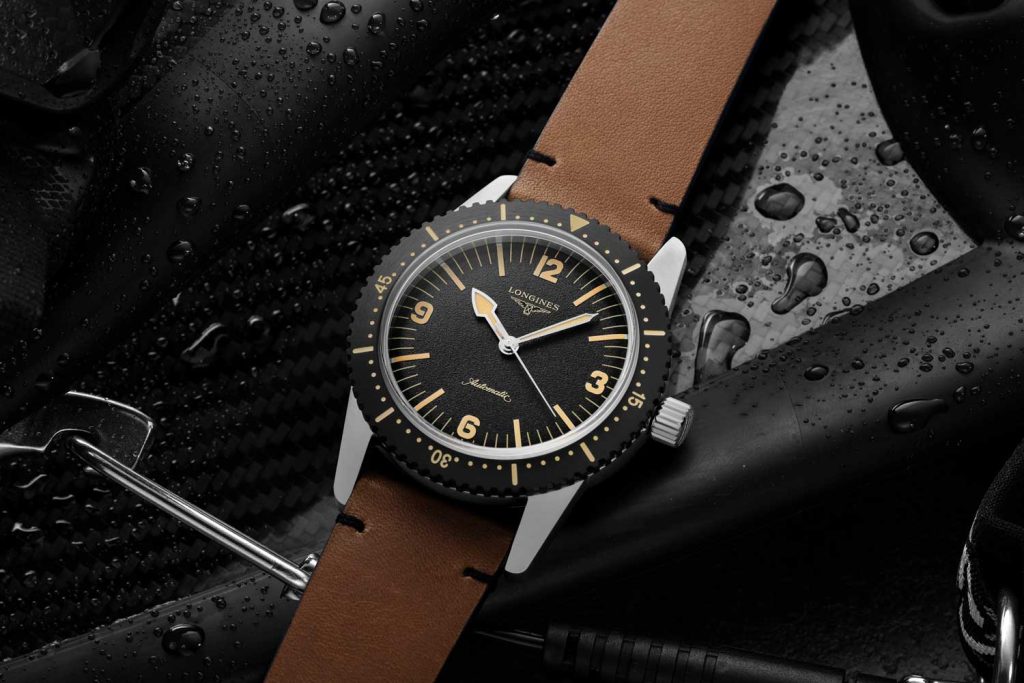
Longines Skin Diver Watch (Image © Revolution)
In place of bakelite (the stuff of kettle handles), the rotating bezel is now in much hardier steel with black PVD coating. Longines has made the Skin Diver a little dressier by reducing the size of the minute numerals on the bezel, with lume on the pip at ‘60’. The single crown still has a cross-hatch pattern as a nod to the original; it’s no longer a Super Compressor case yet has managed a leap in water resistance, to 300 meters.
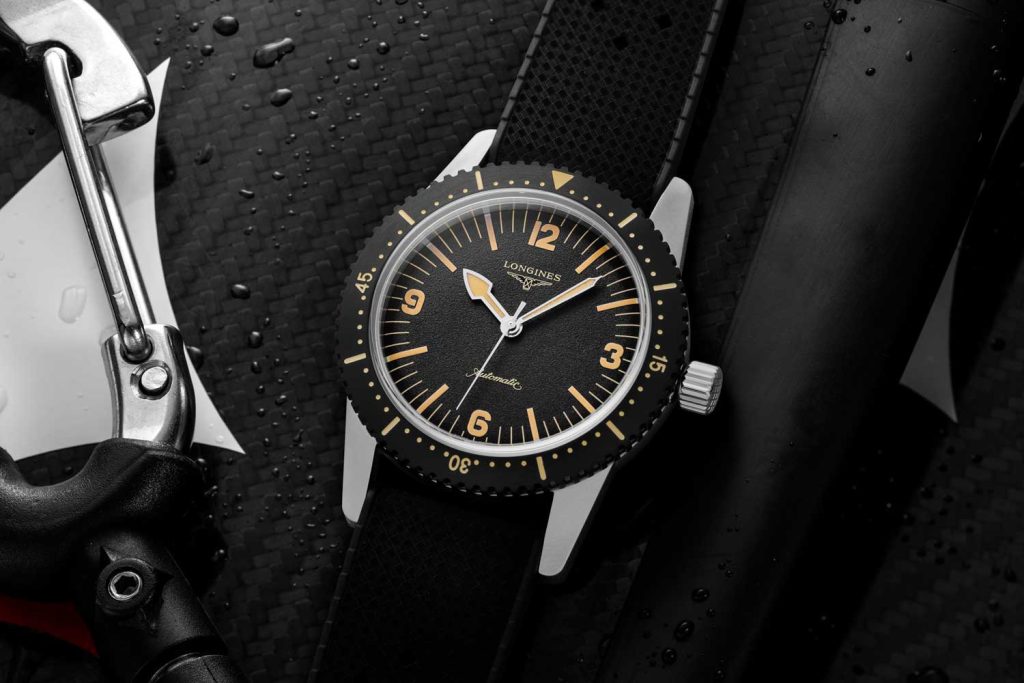
Longines Skin Diver Watch (Image © Revolution)
Inside, the Skin Diver is driven by a self-winding cal. L888-2 made exclusively for Longines which runs at a rather unusual 3.5Hz, to achieve a very substantial power reserve of 64 hours.
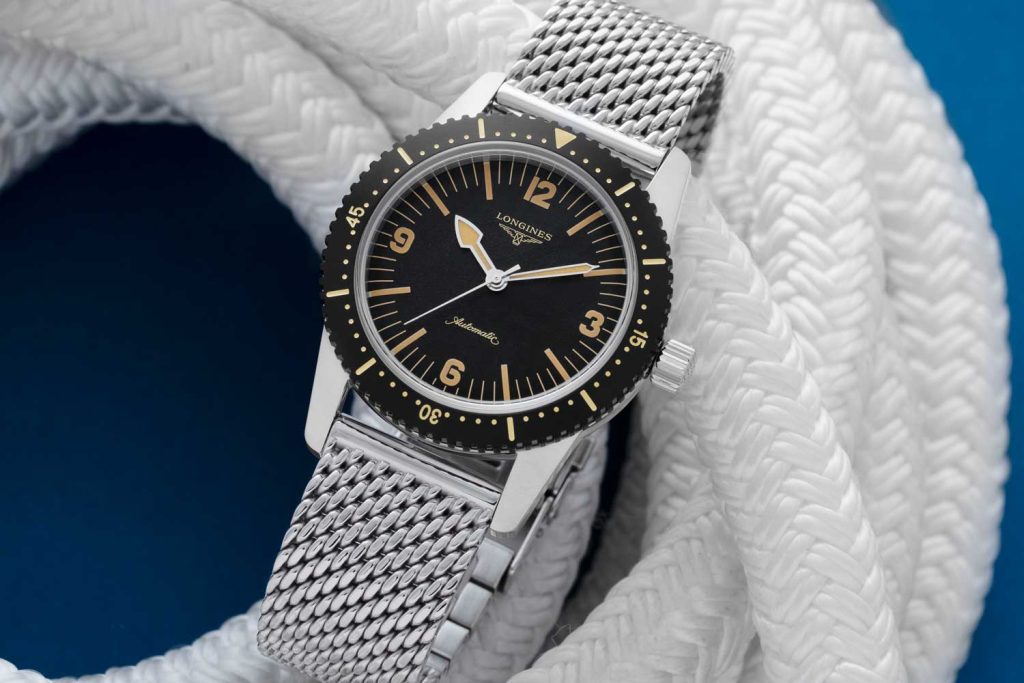
Longines Skin Diver Watch (Image © Revolution)
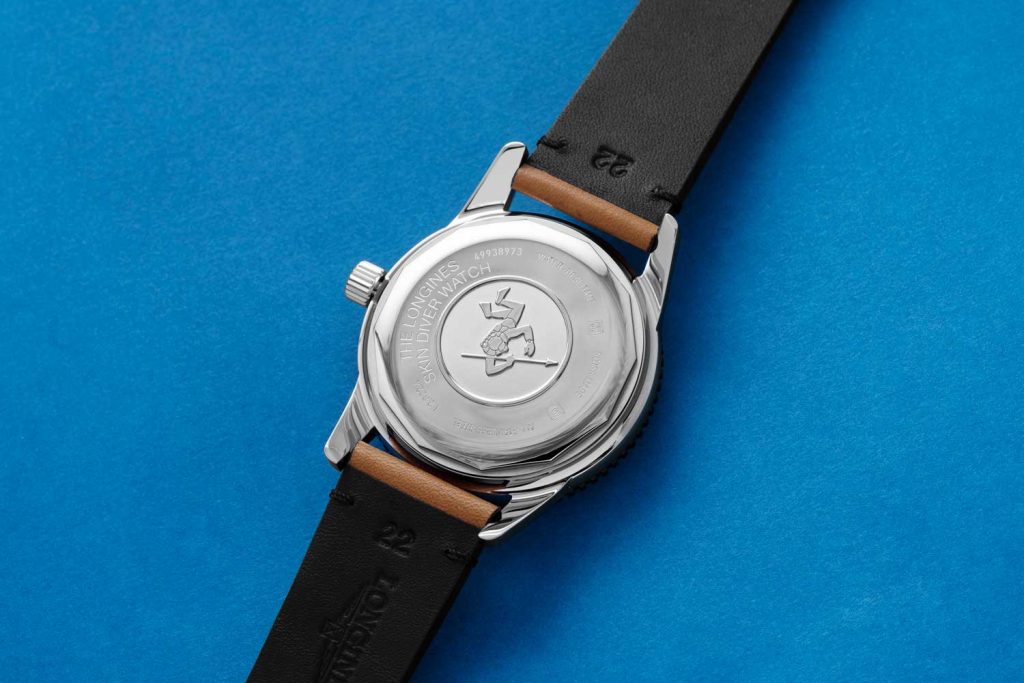
Longines Skin Diver Watch (Image © Revolution)
With its domed sapphire crystal, solid bezel and handsome grained dial, the Skin Diver Watch makes an attractive premium sports watch choice; its long lugs will like a larger wrist or a NATO. Moreover, “Skin Diver” has such a cheery ring to it; serious, not stuffy. A fruitful trip from the archives.
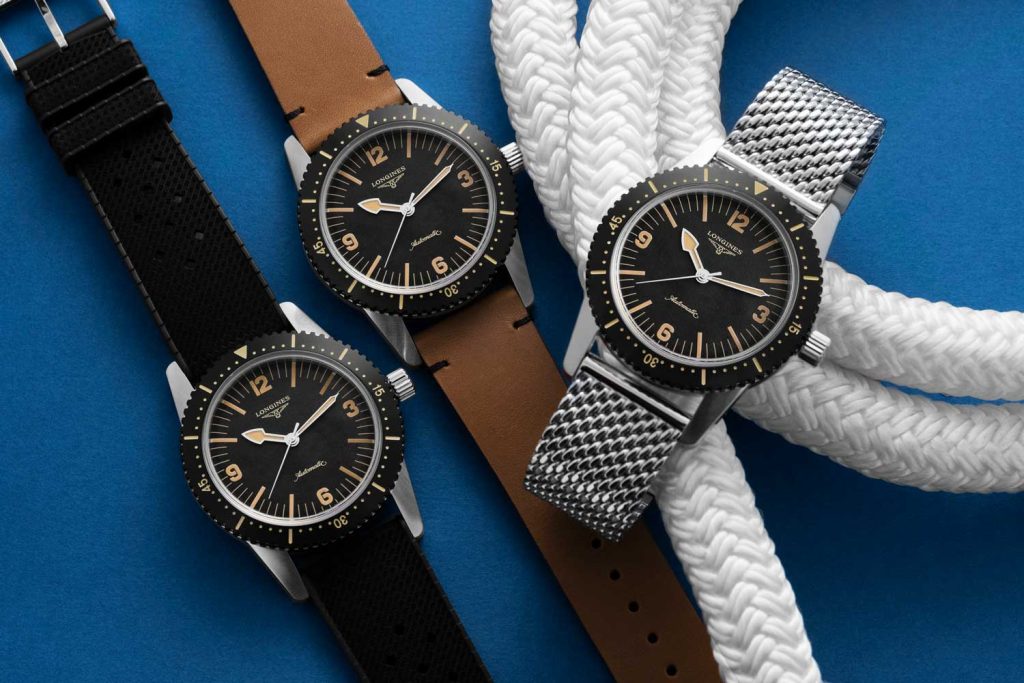
Longines Skin Diver Watches (Image © Revolution)
















